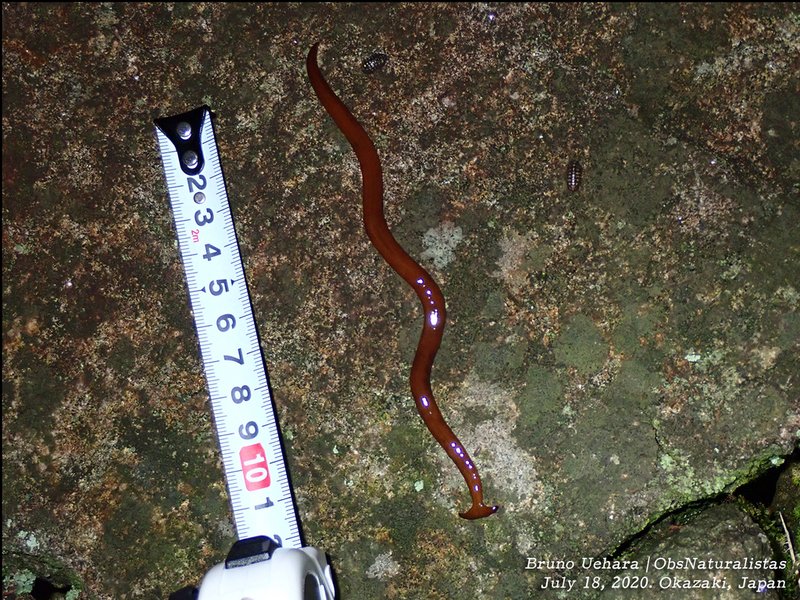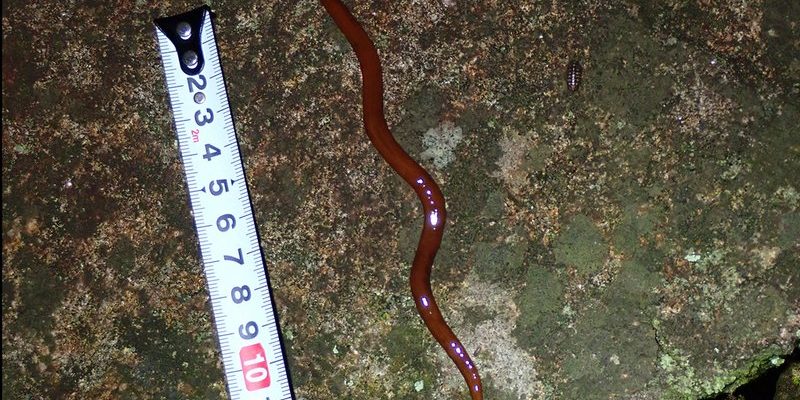
So, what’s the big deal about distinguishing hammerhead worms, millipedes, and slugs? Well, while they might share some traits, they come from different families and have unique lifestyles. For instance, hammerhead worms are predatory and can be a nuisance in gardens, while millipedes are generally harmless recyclers of organic material. Slugs, on the other hand, get a bad rap for munching on plants. Let’s dive deeper and unravel this mystery together, shall we?
What Are Hammerhead Worms?
Hammerhead worms, scientifically known as **Bipalium**, are fascinating creatures. They’re part of a group called flatworms, and you can spot them due to their distinctive, flattened bodies and unique head shape, which looks just like a hammer—hence the name! These worms can range in color from brown to yellowish, often with dark stripes running along their bodies.
One of the most interesting facts about hammerhead worms is that they are **predators**. They hunt down other small creatures, particularly earthworms, which is why you’ll often find them in gardens. If you see a flatworm squirming around, it’s likely one of these hammerhead fellows! Keep in mind,they can be an issue if you’re trying to cultivate a healthy composting environment, as they may eat the earthworms that are beneficial for the soil.
Here’s the thing: if you ever come across a hammerhead worm, be cautious. They possess toxic properties and can be harmful to other small animals. This means they should not be handled carelessly. If you see one while gardening, it’s best to let it be or safely remove it and relocate it far away from your plants.
Introducing Millipedes
On the other end of the spectrum, we have **millipedes**. These critters belong to the class **Diplopoda** and are often seen as little nature recyclers. With their elongated bodies and many segments, they can have anywhere from 30 to over 400 legs! Yep, you read that right. While the name “millipede” suggests they have a thousand legs, most have far fewer.
Millipedes are usually brown or black and can be mistaken for worms when they curl up in a ball. Unlike hammerhead worms, millipedes are not predatory. Instead, they feed on decaying plant matter, which makes them vital for nutrient recycling in the ecosystem. You might find them munching on dead leaves or other organic materials, helping to break them down.
Here’s the fun part: if you pick up a millipede, they sometimes release a defensive secretion that can be a bit irritating to our skin. It’s nature’s way of saying, “Hey! Back off!” But they’re primarily harmless and beneficial to gardens. So, if you spot one, it might be a good idea to leave it alone in its role as a garden helper.
The Slimy World of Slugs
Now let’s talk about **slugs**. These soft-bodied mollusks are part of the class **Gastropoda**, and they can be found almost everywhere—especially when it’s wet. What makes slugs stand out is their shiny, moist bodies, which can vary in color from pale to dark brown, and sometimes even vibrant shades. Unlike millipedes, slugs are not segmented and have a more rounded shape.
You might wonder why slugs often get a bad reputation. Well, they love to munch on plants, especially tender leaves and fruits. So, if you’re a gardener, seeing slugs can send shivers down your spine. They’ll glide across your plants, leaving behind a slimy trail, which can be a real giveaway that they’ve been feasting on your hard work.
Here’s the thing about slugs: while they can be pests in your garden, they also play a role in the ecosystem. They help break down organic matter too! So, next time you see a slug, consider whether you want it around and how you might protect your plants from them without causing harm.
Key Differences in Appearance
Now that we’ve met our three contenders, let’s focus on how to distinguish them at a glance.
- Body Shape: Hammerhead worms have a flat, hammer-like shape, while millipedes are cylindrical, segmented, and often roll into a ball. Slugs have a smooth, soft, and rounded body with no segments.
- Color: Hammerhead worms can be brown or yellowish with stripes, millipedes are usually dark brown or black, and slugs come in a variety of colors, including shades that blend in with their surroundings.
- Movement: Hammerhead worms glide relatively quickly, millipedes move in a wave-like motion using their many legs, and slugs leave a slimy trail as they slide along.
Being able to identify these subtle differences can help you appreciate nature’s variety and make more informed decisions in your garden.
Behavioral Differences
Behavior can also provide important clues.
- Feeding Habits: Hammerhead worms hunt for other small organisms, millipedes consume decaying plant matter, and slugs feed on live plants.
- Habitat: Hammerhead worms prefer moist soil and can often be found under rocks or mulch, while millipedes thrive in damp, dark environments, such as leaf litter. Slugs are commonly found in damp areas and are most active at night.
- Defensive Mechanisms: Hammerhead worms can be toxic; millipedes can secret a protective substance that irritates skin, while slugs primarily rely on their slime to escape predators.
Understanding these behaviors can help you navigate your interactions with these creatures, whether you’re trying to cultivate a peaceful garden or simply enjoy watching them in action.
Why It Matters to Know the Difference
You might be wondering why it’s important to know the differences between hammerhead worms, millipedes, and slugs. Well, recognizing these creatures can affect how you manage your garden and your natural environment.
For instance, if you notice hammerhead worms, you may want to take action to protect your earthworms and soil health. On the flip side, if you find millipedes, you can appreciate their role in breaking down organic material without risking any harm to your plants. As for slugs, knowing they can be pests allows you to come up with strategies to keep them in check without eliminating beneficial organisms.
Being informed helps you strike a better balance in your garden. Plus, it promotes a healthier ecosystem overall. After all, every creature has its role, and knowing who’s who can help you foster a thriving outdoor space.
In conclusion, hammerhead worms, millipedes, and slugs may look similar at first glance, but they have their own unique traits, behaviors, and contributions to the environment. The next time you’re outside, take a moment to observe these fascinating creatures and their actions. Understanding the differences not only enriches your knowledge of the natural world but also helps you make informed decisions about your garden and the ecosystem.
Remember, nature has a way of balancing itself. By learning about these different organisms, you’re also embracing the incredible diversity of life around you. So, whether you’re watching a hammerhead worm glide by, a millipede munching on leaves, or a slug enjoying a meal, appreciate the little wonders that make up our world. Happy exploring!

